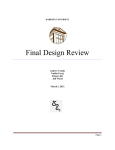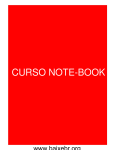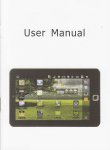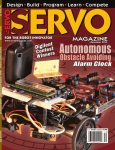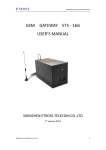Download Preliminary Design Report
Transcript
HARDING UNIVERSITY Preliminary Design Report Asklepius Pill Dispenser Andrew Combs Emilia Faraj Ethan Lilly Jeff Wood Oct. 12, 2011 Asklepius Pill Dispenser Table of Contents Background……………………………………………………………………………………….3 System Overview…………………………………………………………………………….……4 System Design Functional Decomposition Diagrams………………...…………………………………...5 Functional Description of Blocks………………………………………………………..8 Project Plan Organization and Management…………………………………………………………..20 Work Breakdown Structure Fall 2011…………………………………………………………….…………...21 Spring 2012………………………………………………………………………23 Gantt Charts Fall 2011………………………………………………… ……………….……..25 Spring 2012…………………………………………………….……..………….26 Pert Charts Fall 2011………………………………………………………………………..27 Spring 2012……………………………………………………………………..28 Budget………………………………………………………………………………….29 Appendix Project Launch Document………………………………………………………….…….30 2 Asklepius Pill Dispenser Background Medicine is one of the greatest demands of people over 65. The elderly rely on medicine to maintain an active and independent lifestyle. Keeping track of medication can be complicated. The elderly must often take multiple types of medication at different times of the day. Keeping track of these medications is a burden for the elderly. Arthritis, poor eyesight, poor hearing, and memory lapses can make it difficult for some older people to take their medications correctly. Overdose of medication or forgetting to take medication can have deadly consequences. The elderly desperately need a product to keep track of their medication and administer the correct amount at the correct time. The Asklepius medicine dispenser meets this need by providing a product that will keep track of the user’s medication. The device will dispense the medication at times specified by the user and will alert the user when it is time to take their medication. 3 Asklepius Pill Dispenser System Overview The Asklepius Pill Dispenser device will help users to keep track of their medication by dispensing the correct pills at the correct time. The user will program the device to dispense pills throughout the day. They will do this using their computer to link to the device using a Wi-Fi network. The device will also have a keypad that will allow the user to connect the device to the Wi-Fi network. When a dose of pills is dispensed by the device, an alarm will sound to remind the user to get their medicine from the device. It will also display any instructions that are needed for taking the medication. The device will verify that the user has retrieved their medicine. If the user does not retrieve their medicine, the device will send an email to an address programmed into the device. Most of the device’s components will be contained inside an external housing. This housing will have a door with a lock. The user can access the interior of the device through this door. The interior will contain nine storage bins. Each bin will store pills of one type. The dispensing mechanism will transport one pill from one of the bins to the area where the user will pick up the medicine. The dispensing mechanism is an encased auger that will be attached underneath each of the bins. When the pill falls out of the encasement it will slide on a slide to the retrieval area. The device’s control system will store all of the data supplied by the user and all of the device’s programs. The dispenser will be powered by a standard 120 V AC, 60 Hz wall outlet, but will also have a backup battery that will power normal operation of the device for seven days in the event of a power outage. 4 Asklepius Pill Dispenser System Design Functional Decomposition Diagrams Level Zero Level One 5 Asklepius Pill Dispenser Level Two: Pill Storage and Dispensing Mechanism Level Two: Power System 6 Asklepius Pill Dispenser Level Two: Control System Level Two: User Interface 7 Asklepius Pill Dispenser Functional Description of Level 1 Blocks Device Housing: The device housing will protect the components of the device. The housing will have a door with a lock that will prevent access to the pills. Its dimensions will be less than 0.46 m (18 in) high, 0.38 m (15 in) wide, and 0.38 m (15 in) long. Input: Lock: a lock prevents unwanted entry into the device housing Output: None Pill Storage and Dispensing Mechanism: The pill storage and dispensing mechanism will store all of the pills inserted by the user. It will move one of the pills in the storage bins to the area where it will be retrieved by the user. Inputs: Pills: the pills placed inside the pill storage bins by the caretaker Power Supply: 3 to 12 VDC and a maximum of 200 mA Outputs: Pills: the pills slide into the area where they will be retrieved by the user. Pill Dropped: the pill will trip the control system sensor that detects when a pill has been extracted from the auger/casing 8 Asklepius Pill Dispenser Power System: The power system controls all of the electric power used by the device. It receives electricity from a wall outlet. It also contains the back-up battery that will be used in the event of a power outage. Inputs: Wall Outlet: 120 VAC at 60 Hz and a maximum of 6 A Control Signals: signals from the microprocessor that control the power given to the devices Outputs: User Interface: 3.3 – 12 VDC and 320 mA powers the devices in the User Interface. Alarm: 0 – 5 VDC and a maximum of 250 mA powers the alarm Control System: 3.3V ± 1.5 V and a maximum of 405 mA powers the devices in the Control System Pill Storage and Dispensing Mechanism: 3 to 12 VDC and a maximum of 200 mA powers the motors in the Pill Storage and Dispensing Mechanism 9 Asklepius Pill Dispenser Control System: The control circuit consists of the microprocessor and the sensors that read if a pill has been dispensed. Inputs: Power Supply: 3.3V, ±1.5V at 405 mA with signals of 0-5 V, 5 mA User Interface: input signals from the keypad and medication retrieval switch Pill Storage and Dispensing Mechanism: pill dropped signals Outputs: User Interface: commands to the LCD screen Power Supply: signals of 0-5 V, 5 mA Email: message when the user doesn’t take their medication 10 Asklepius Pill Dispenser User Interface: The user gives information to the device using the user interface. Inputs: Caretaker Input: the medication information supplied by the user Confirmation of Medicine Retrieval: this is the input from the user to the device that lets the device know that the user has received their medication Power Supply: 3.3 – 12 V and 320 mA from the Power System From Control System: commands to the LCD screen Outputs: Message to User: all of the messages displayed on the LCD Screen Information to Control System: signals from keypad and medication retrieval switch Alarm: The alarm will sound when the pills have been dispensed. The volume of the alarm will be between 80 dB and 90 dB. It will have a switch for the user to turn it off. Input Power supply: 0-5 V at 250 mA Output A tone between 80-90dB 11 Asklepius Pill Dispenser Functional Description of Level 2 Blocks Pill Storage Bins: The pill storage bins will each hold one type of pill. There will be a total of nine bins. Each bin will hold 90 pills. Input: Pills: the pills placed inside the pill storage bins by the caretaker Output: Pills: pills extracted by the auger/casing mechanism. Slide The slide will be positioned underneath the end of the casing of the auger/casing mechanism. When a pill falls out of the casing, it will fall onto the slide. The pill will slip down the slide to the retrieval area. Input: Pills: pill that falls out of the casing Output: Pills: pill in the retrieval area 12 Asklepius Pill Dispenser Auger/Casing Mechanism The auger/casing mechanism will extract pills from the pill storage bins. This mechanism consists of an auger screw encased in a tubular casing. One pill at a time will be moved from the pill storage bin to the slide by the turning of the auger. Inputs: Pills: the pills stored in the pill storage bins. Electrical to Mechanical Energy Conversion: rotation at a torque of 619 oz. in. and rotational speed of 1 rpm. Outputs: Pills: a specified number of pills released by the mechanism Pills Dropped: the dropped pill triggers a photo-sensor. Electrical to Mechanical Energy Conversion The electrical to mechanical energy conversion takes the electrical energy supplied by the power circuit and converts it to rotational mechanical energy. Input: Power Supply: 3-12 VDC, 200 mA for each motor Output: Auger/Casing Mechanism: shaft rotating at 619 oz. in., 1 rpm for each motor 13 Asklepius Pill Dispenser Sensors: The photo-sensors will be attached to the end of each auger/casing mechanism. A reading from the sensors will be sent to the microprocessor when a pill has been dispensed. The microprocessor will send a signal to the motor to stop rotating the screw. Inputs: Power System: ±15 V, 4.5 mA Pill Storage and Dispensing Mechanism: pill dropped signal from the pill storage and dispensing mechanism. Output: Microprocessor: signal of 0-14 V, 4.5 mA 14 Asklepius Pill Dispenser Microprocessor: The microprocessor will integrate all of the electrical components of the device and allow the caretaker to program the dispensing of the medication. Inputs: Power supply: 3.3 V at 250 mA Control signals from power supply: 0-5 V at 5 mA User Interface: signals from the keypad and medication retrieval switch Sensor: signal of 0-14 V at 4.5 mA Wi-Fi Transceiver Module: medication information and other information from the caretaker Outputs: Power Supply: signals of 0-5 V at 5 mA User Interface: commands to the LCD screen Wi-Fi Transceiver Module: message to be emailed to the user 15 Asklepius Pill Dispenser Wi-Fi Transceiver Module: The Wi-Fi transceiver module will connect to the Wi-Fi network and allow the user to access the device through this network. It will receive information from the graphical user interface and will also be used to send emails to the caretaker. Inputs: Power Supply: 3.3 V, 150 mA Microprocessor: message to be emailed to the caretaker Information from GUI: medication information and other information from the caretaker Outputs: Microprocessor: medication information and other information from the caretaker Email to the user: email in the event that the user does not take their medication Battery: The back-up battery will power the device in the event of a power failure. It will be able to power the device for at least a week. Inputs: Power Supply: charges from the power supply Output: Power Supply: provides power to the power supply in the event of a power failure 16 Asklepius Pill Dispenser Power Supply: The power supply consists of all the circuitry that will power the pill dispenser. Inputs: Wall Outlet: 120 VAC at 60 Hz and a maximum of 6 A Control Signals: signals from the microprocessor that control the power given to the devices Outputs: User Interface: 3.3 – 12 VDC and 320 mA powers the devices in the User Interface. Alarm: 0 – 5 VDC and a maximum of 250 mA powers the alarm Control System: 3.3V ± 1.5 V and a maximum of 405 mA powers the devices in the Control System Pill Storage and Dispensing Mechanism: 3 to 12 VDC and a maximum of 200 mA powers the motors in the Pill Storage and Dispensing Mechanism Medication Retrieval Switch: The switch will be used to turn the alarm off when the medication is retrieved by the user. It will also make sure the user doesn’t receive an email when it is turned off. Input: Confirmation of Pill Retrieval: the user will trigger the switch when retrieving medication Output: Microprocessor: signal that medication has been retreived 17 Asklepius Pill Dispenser Keypad The keypad on the device will allow for the caretaker to input the name of the Wi-Fi network and the password in order to connect the device to a Wi-Fi network. Inputs: Power Supply: 12 V, 20 mA Caretaker Input Output: Microprocessor LCD Screen The LCD screen will give prompts to the caretaker and display characters as the caretaker inputs them into the keypad. This will assist the caretaker in connecting the device to a Wi-Fi network. It will also inform the patient of any instructions for a particular medication when it is dispensed. Inputs: Power Supply: 5 V, 300 mA Commands from the microprocessor: to display characters, clear the screen, etc. Output: Messages to the caretaker or patient 18 Asklepius Pill Dispenser Graphical User Interface: The graphical user interface will be the intuitive interface that the user will use on their computer to program the device to dispense medication properly. This is not be part of the device but is instead the software that is used to interact with the caretaker. Input: Caretaker Input: information from the user, such as number of pills, what bin the pills are placed in, times to dispense pills, and any instructions that go with taking the medication Output: The information packets sent to the Wi-Fi network 19 Asklepius Pill Dispenser Project Plan Organization and Management The Asklepius Pill Dispenser team comprises two mechanical engineering students, one computer engineering student, and one electrical engineering student. The project’s management and design tasks will be distributed among the team into the following responsibilities: Andrew Combs (Mechanical Engineer) – Andrew is the team leader of this project. He is responsible for making sure that the subsystems are completed and integrated on time. He is responsible for making sure that all reports and presentations are completed on time. He is responsible for the design and construction of the auger/casing mechanism and the gearing subsystems. Andrew will work with Jeff to make sure all of Jeff’s tasks are completed. Jeff Wood (Mechanical Engineer) – Jeff is responsible for making the SolidWorks drawings of the design. He is responsible for the design and construction of the device housing, pill storage bins, slide, and pill retrieval area. He will work with Andrew to make sure that all of Andrew’s tasks are completed. Ethan Lilly (Computer Engineer) –Ethan is responsible for programming the microprocessor and constructing the user interface, which includes the LCD screen, keypad, graphical user interface and the Wi-Fi interface. Ethan will back up Emilia to make sure she completes her tasks. Emilia Faraj (Electrical Engineer) – Emilia is responsible for maintaining the budget. She is responsible for the electrical designs for the power supply, the alarm, and the sensors. She will work with Andrew in the electromechanical components of the dispensing mechanism. She will back up Ethan to make sure he completes his tasks. 20 Asklepius Pill Dispenser Work Breakdown Structure Fall 2011 Task Description Deliverables Start Stop People F1 Project Selection Decide what project the team will pursue Project Approval 8/25 9/6 A,EF,EL,J F2 Project Launch Technical description of the project's goals. Document and Presentation 9/7 9/24 A,EF,EL,J F3 Preliminary Design Breakdown of all sub-systems in the device. Document and Presentation 9/26 10/4 A,EF,EL,J F4 Electrical to Mechanical Conversion Motors that will drive the auger's rotation. Detailed design and construction plan. 10/5 10/28 EF,A F5 Bin Design Bins into which the pills will be placed. Detailed design and construction plan 10/5 10/25 J,A F6 Auger/Casing Design Auger/casing mechanism for transporting pills. Detailed design and construction plan. 10/5 10/25 A,J F7 Gearing Design Gearing system to adjust rotational energy. Detailed design and gear selection. 10/29 11/2 A,J F8 Device Housing Design The material, shape, and dimensions of the device body. Detailed design and construction plan 11/7 11/14 J,A F9 Slide Design Slide which will transport the pills to the retrieval area. Detailed design and construction plan. 11/7 11/14 J,A F10 Design Power Circuit Circuit that will supply power to all of the other systems in the device. Detailed schematic and parts selection. 10/5 10/25 EF F11 Alarm Selection Alarm that will alert the patient when medication is ready. Detailed schematic and parts selection. 10/26 11/1 EF 21 Asklepius Pill Dispenser Work Breakdown Structure Fall 2011 Task Description Deliverables Start Stop People F12 Sensor Selection Sensor that will detect when a pill is dispensed. Detailed schematic and parts selection. 10/26 11/1 EF F13 Battery Selection Battery selection. 10/29 11/4 EF F14 Program Design Flowcharts and starting programs. 10/8 11/11 EL F15 Keypad Selection Keypad that will allow the caretaker to connect the device to a Wi-Fi network. Detailed schematic and parts selection. 10/8 10/15 EL F16 LCD Selection A screen that will display characters to the users. Detailed schematic and parts selection. 10/8 10/15 EL F17 Wi-fi Module Selection A wi-fi module that will allow the device to connect to a wi-fi network Detailed schematic and parts selection. 10/8 10/15 EL F18 Microprocessor Selection A microprocessor that is able to control all electronic devices. Detailed schematic and parts selection. 10/8 10/15 EL F19 Design User Interface GUI mock-ups and schematics 10/16 10/23 EL F20 Memory Design Detailed schematic and parts selection. 10/16 10/23 EL F21 System Analysis Final system and subsystem design. 11/15 12/2 A,EF,EL,J F22 Interim Design Report Document and Presentation 11/15 12/6 A,EF,EL,J Battery to provide backup power in the event of a power outage. Create flow charts for all of the programs and begin writing. User interface for programming the device using a computer. Lay out all of the information that will need to be stored in memory and organize the information into data structures. Ensure that all systems will integrate properly. Technical description of the final system and sub-system design. 22 Asklepius Pill Dispenser Work Breakdown Structure Spring 2012 Task Description Deliverables Start Stop People Device Housing Construction Construct the device housing. Housing that meets dimensions requirements 1/9 2/15 J,A,EF,EL S2 Bin Construction Contruct the bins in which the pills will be placed. Bins are able to store 90 pills. Nine bins that can fit into the device 1/9 1/30 J,A S3 Auger/Casing Construction Construuct the auger/casing mechanism. Auger/casing mechanism is able to dispense one pill at a time 1/9 1/30 A,J Slide Construction Construct the slide which will transport pills to the retrieval area. Slide is able to transport pills to the retrieval area. 1/31 2/7 J,A S5 Motor Testing Test the motors to ensure that they provide correct rotation and torque Working motors. 1/9 1/16 EF,A S6 Gear Testing Test gears to ensure that they modify rotation correctly. Working gears attached to the motors. 1/17 1/24 A,J S7 Alarm Testing Test that the alarm is within 80 to 90 dB. Working alarm within dB limits 2/8 2/15 EF S8 Sensor testing Test that the sensors detect pills consistently. Working sensors 2/8 2/15 EF S9 Battery Testing Test the battery for a one week's worth of dispensing. Battery passes battery life test. 1/24 1/31 EF S10 Inverter Construction Build an inverter that converts AC from a wall outlet to DC voltage. Working circuit 1/9 1/23 EF S11 Power Circuit Construction Build a circuit that supplies electrical energy to the other components. Working circuit 1/24 2/7 EF S12 Microprocessor Testing Test that the microprocessor responds correctly to all specified events. Working microprocessor 1/9 1/23 EL S1 S4 23 Asklepius Pill Dispenser Work Breakdown Structure Spring 2012 Task Description Deliverables Start Stop People S13 Keypad Testing Test that every key on the keypad sends the proper signal. Working Keypad 1/9 1/23 EL S14 LCD Screen Testing Test that the LCD displays all necessary characters properly. Working LCD Screen 1/9 1/23 EL S15 Wifi-Testing Test that the Wi-Fi module can connect to WEP, WPA and WPA2 secured networks. Working Wi-Fi Module 1/9 1/23 EL S16 Program User Interface Program the wireless network interface. Graphical user interface 2/1 2/8 EL S17 Dispense Medication Program Finish writing the code that controls the dispensing of the medication. Program code 2/9 2/15 EL S18 Medication Retrieval Confirmation Program Finish writing the code that checks to make sure the medication was taken. Program code 2/9 2/15 EL S19 Wi-Fi Set Up Program Finish writing the code that alllows the caretaker to connect to a wi-fi network Program code 1/24 1/31 EL S20 System Integration Assemble and arrange all components in the device. All components are secured in the device housing. 2/16 3/19 J,A,EL,EF S21 System Testing Complete System Testing Plan. Pass all tests described in the device testing plan. 3/20 4/3 J,A,EF,EL S22 Final Design Review Report on progress, issue resolution, testing plan and budget. Report and Presentation 2/16 3/1 J,A,EF,EL S23 Product Readiness Review Report on system demonstration results, budget and resources Report and Presentation 4/12 4/26 J,A,EF,EL 24 Asklepius Pill Dispenser Gantt Chart: Fall 2011 25 Asklepius Pill Dispenser Gantt Chart: Spring 2012 26 Asklepius Pill Dispenser 27 Asklepius Pill Dispenser 28 Asklepius Pill Dispenser Budget Item Mechanical Components Geared Motors Possible Vendor Cost/Unit ($) Units Total Cost ($) Date Estimated www.servocity.com 24.99 9 224.91 10/8 Plexiglas Sheet (72"x36") www.lowes.com 54.98 1 54.98 10/8 Zinc Corner Brace (4 braces in each, screws included) www.lowes.com 2.38 4 9.52 10/8 www.expresspcb.com www.digikey.com www.planetbattery.com www.digikey.com 61.00 20.00 30.00 12.00 1 1 1 1 61.00 20.00 30.00 12.00 10/3 10/3 10/3 10/3 www.digikey.com 12.00 1 12.00 10/3 www.digikey.com 5.00 9 45.00 10/3 www.microchip.com www.microchip.com www.futurlec.com www.futurlec.com 5.00 25.00 10.00 5.00 4 1 1 1 20.00 25.00 10.00 5.00 10/8 10/8 10/8 10/8 Electrical Components PCB Inverter (misc) Battery Alarm Power Supply (misc) Photo-Diode Sensor Computer Components Microprocessor Wi-Fi Module LCD Screen Keypad Total ($) Contingency ($) Budget ($) 529.41 500.59 1030.00 29 Asklepius Pill Dispenser Appendices Project Launch Document Overview The number of people over 65 is increasing due to the aging of the Baby-Boomers, the generation of people born between 1946 and 1964. One of the greatest demands of this generation is medicine. People over the age of 65 buy 30 percent of all prescription drugs and 40 percent of all over-the-counter drugs (1). The average number of pills taken daily by people over the age of 65 is 2.9. More than one in five seniors take five or more different prescription drugs every day. Here is a table showing the number of drugs taken daily by seniors (2). Table 1. Number of pills taken by people over 65. Pills Taken 0 1-2 3-4 5+ Percentage of Seniors 18% 36% 25% 21% Keeping track of medication is a burden for the elderly. Arthritis, poor eyesight, poor hearing, and memory lapses can make it difficult for some older people to take their medications correctly. Studies have shown that between 40 and 75 percent of older people don't take their medications at the right time or in the right amount (1). The consequences for not taking medication properly can be fatal. When two or more drugs are mixed in the body, they may interact with each other and produce uncomfortable or even dangerous side effects (1). Medication users desperately need a product to keep track of their medication and administer the correct amount at the correct time. 30 Asklepius Pill Dispenser Some people organize medication by putting it into a small container that is partitioned into seven smaller containers, each representing a different day of the week. This method is very tedious and also fails at organizing many varieties of medication. It does nothing to help people remember to take their medication. There is another device which allows a user to organize pills into 29 separate bins and set a timer that will alert the user when it is time to take their medication. The problem with this is that each bin only has enough space for three pills at the most, and the alarm can only be set to go off once a day. It also does not dispense the pills, but leaves them accessible to the user (3). The Asklepius medicine dispenser will solve these problems, making it easier to organize medication. It will be quick, easy to setup, and will allow a person to stay organized for a month at a time. The device will also sound an alarm when it is time to take the medication. The Asklepius medicine dispenser is the superior alternative. Problem Statement Taking the correct medication at the correct time is challenging for the elderly and can be a burden on loved ones. Not taking medication properly can be very dangerous and potentially fatal. The age 65 and over market demands a cost effective device that will keep track of and dispense the proper amount of medication at the right time. Customer Needs The caretaker is the person who sets up the device and is assumed to have the technical skills of an average person. The patient is the person receiving pills dispensed from the device and might have mental difficulties. The caretaker will organize pills into the device and then set it up to dispense a certain amount of pills at specified times. 31 Asklepius Pill Dispenser The device needs to consistently dispense the amount of pills entered by the caretaker at the time entered by the caretaker. For the device to be useful, it needs to at least achieve accuracy greater than that of the patient remembering to take their pills with reminders from the caretaker. The device needs to service a large variety of pills. If there are many types of pills that are not serviceable by the device, then the device will not appeal to a large percentage of its target market. The device needs to be light enough for an average person to carry easily. The device needs to be portable and easy to handle. It needs to fit comfortably on an average kitchen counter top, which has 0.46 m (18 in) of space between the counter top and upper cabinets (4). The device needs to remain active at all times. Since the device will serve a critical application, the device needs to remain in operation in the event of a power failure. The device needs to alert the patient when a dosage is ready. The device needs to be easy for the average person to set up. This means that it needs to be easy for the average person to insert pills into the device and program when they should be dispensed by the device. The internal components of the device need to only be accessible to the caretaker. This is to prevent other people such as the patient from accessing the pills inside the device. The device needs to hold a month’s supply of pills. This will increase the ease of use for the caretaker. The device needs to notify the caretaker when the patient does not take their pills. Operational Description 32 Asklepius Pill Dispenser Pills Loading Process: • Unlock and open the door of the device to access pill storage bins inside the device. • Insert each type of pill into one of the storage bins. Be sure to only put one type of pill into each bin. • Close and lock the device. • Make sure the device is plugged into a power outlet and the power is switched on. Programing Process: • Program the device using a laptop computer wirelessly connected to the device. • Specify the type of pills in each storage bin. • Specify the doses and the times these doses are to be taken. • Enter the email address you would like to be notified at in the case that the patient does not receive their pills. Patient Pill Retrieval Process: • Turn off the alarm located by the pill tray. Verify that the person receiving the pills is correct • Grab pills from the pill tray. Technical Requirements A pills dispenser project, titled PEZ, was completed by one of the 2010-2011 Senior Design groups. Some of our technical specifications were selected with intentions of making improvements on last year’s project. • It will successfully provide the proper pills specified by the caretaker in a minimum of 40 out of 40 tests. • It will be able to service pills ranging from 10 mg to 1 g. 33 Asklepius Pill Dispenser • It will weigh less than 130 N (30 lbf). • Its dimensions will be less than 0.46 m (18 in) high, 0.38 m (15 in) wide, and 0.38 m (15 in) long. Last year’s dimensions were, 0.54 m (21.25 in), 0.44 m (17.5 in), and 0.48 m (19 in) respectively. The spatial dimensions of the object are defined as the smallest cube needed to encapsulate the object. For example, the height of the device is the distance from the base of the device to the tallest point on the device. • A back up battery will be used as a fail-safe in the event of a power outage. It will be able to power the device for one week. • The device will have an alarm that will sound when the pill is being dispensed. The alarm will have a volume between 80 to 90 dB. • An average person will be able to program the device in less than 5 min. • The device will have a lock that only the caretaker can open. This lock will bar access to the pills. • The device will store 90 pills of each medication. • The device will be able to connect to a WEP, WPA and WPA2 secured Wi-Fi networks. • The device will email the caretaker when the patient's pills are not taken within 30 minutes of the alarm initially sounding. 34 Asklepius Pill Dispenser Table 2. Technical Specifications No. 1 2 3 4 5 6 7 8 9 10 11 Metric Total Weight Units N Device Size Time to program a medication Amount of pills in each bin Intensity of the alarm Time for battery to discharge Weight of pills Lock Successful dispensing tests Time to alert caretaker Wi-Fi connection m Value < 130 0.46 (H) x 0.38 x 0.38 min pills dB <5 90 80-90 week mg bool % min bool 1 10-1000 TRUE 100 30 TRUE 1 2 3 4 5 6 7 8 9 10 11 Total Weight Device size Time to program a medication Amount of pills Intensity of the alarm Time for battery to discharge Weight of pills Lock Successful dispensing tests Time to alert the caretaker Wi-Fi connection Table 3. Needs-Metrics Matrix ● ● 1 Portable and easy to handle ● 2 Easy to program 3 Large variety of medication 4 Alert the patient when a dosage is ready 5 Remain active at all times 6 Month's supply of medication 7 Internal components of the device only accesible to the caretaker 8 Consistently provide medication 9 Alert the caretaker if a dosage has not been taken 35 ● ● ● ● ● ● ● ● ● Asklepius Pill Dispenser Deliverables • Pills Dispenser device • Systems capability specifications • Detailed schematic and final report on device functionality • User manual • Parts manual and corresponding budget Testing Plan • The general testing procedure for the efficacy of the dispensing mechanism of the device will be carried out as follows: • Pills will be inserted into the device. For the purpose of this test, we will not limit ourselves to actual pills, we will allow for other forms of solid, orally ingested tablets and capsules such as mints or candies. • The device will be programmed to dispense the pills at a set time. There are no requirements for what this time will be. • The success criterion described in the following paragraph will be determined by visual observation by one of the team members. The success of the test is dependent on two factors. First the dispensing operation must begin at the time programmed into the device. The operation will be counted as being on time if it begins within one minute of the programmed time. Second, the operation that begins at the said time must result in the amount and type of pills being dispensed as programmed by the caretaker. This means that the pill(s) that are programmed to dispense at a certain time do not have to land in the retrieval area at that time. They only need to land in the retrieval area as a result of an operation that begins at 36 Asklepius Pill Dispenser that time. If both of these requirements are successfully met, then the result of the test is successful. Otherwise, the test is not successful. Forty tests will be performed. These tests will fall into one of four categories. Each category tests pills that fall within a certain range of masses. The categories are: 10 mg to 250 mg, 250 mg to 500 mg, 500 mg to 750 mg, and 750 mg to 1 g. For example, a pill that weighs 100 mg is a category one pill. The forty tests will be divided evenly between these four categories, meaning that ten tests will be done with pill sizes in only one category. The device must perform successfully in forty consecutive tests, with the variability of pill types as described above. Any number of other tests may be performed before or after these forty tests without affecting whether the device successfully meets the reliability requirement. • The device will be weighed with a bathroom scale to determine that it meets the weight requirement. The device will be weighed ten times. The mean of these measurements must be under the requirement listed in the technical requirements. • The device will be measured to determine that it meets the volume requirements. These measurements will be made with a measuring tape. The height, width, and length of the device will be measured ten times each. The mean of these measurements must be less than requirements listed in the technical requirements. For example, the height of the device will be measured ten times with a measuring tape. These ten measurements will be averaged. That mean must be less than 0.46 m. The definition of the height, weight, and length is described in the technical requirements. 37 Asklepius Pill Dispenser • The life of the back-up battery will be tested. The battery will be fully charged and the device will undergo eight days’ worth of dispensing in a 24 hour period. This assumes the worst case scenario of dispensing a pill from every bin three times a day, which adds up to dispensing a pill from each bin 24 times. We will do eight days’ worth rather than seven to account for the total time throughout the week that the device is not dispensing. • The intensity of the alarm will be measured with a digital-display sound-level sensor from radio shack (5). The sensor reads from 50 to 126 dB and will be placed within three feet of the device. The alarm intensity will be measured from within this distance ten times. The mean of these measurements must fall within the range listed in the technical requirements. • Random people will be asked to program the device. The number of people that perform this test must at least be above ten. The time it takes a person to program the device will be recorded by one of the team members. The time needed to program the device does not include the time taken to learn how to use the device. The programming time of all of the testers will be averaged. To successfully meet the ease of use requirement, this average must be under five minutes. • To determine that a container holds a month’s supply of pills, 90 pills will be poured into a container. If all of the containers are the same size, then this test will only need to be performed on one of the containers. If the containers are different sizes, then this test will be performed on the smallest container. The pills used in this test must be category four. To successfully meet this test, 90 pills must fit into the container without spilling over the top. 38 Asklepius Pill Dispenser • We will connect the device to a WEP, WPA and WPA2 secured Wi-Fi network five times each. If the device successfully connects to the Wi-Fi network five times consecutively for each type, it has passed this requirement. Any number of tests before or after each of these five tests may be performed without affecting whether or not this requirement has been met successfully. • To determine if the device successfully emails the address given by the caretaker when pills are not taken, we will purposefully allow the alarm time to run out 10 times after dispensing pills. If an email is sent for all 10 tests consecutively, this requirement has been met. Any number of tests before or after these 10 tests may be performed without affecting whether or not this requirement has been met successfully. For normal operation, the time that the device would wait before sending an email will be 30 minutes; however, for the purpose of this test that time will be reduced to 1 minute. References 1. Pueblo, Colorado, Federal Information Center. Medication advice for seniors. (http://www.pueblo.gsa.gov/cic_text/health/meds4old/697_old.html) 2. Minnesota Board on aging. (http://www.mnaging.org/pdf/Prescription%20Drug%202002.PDF) 3. Shopping page for a competing pill dispenser at Wheel Chair Select. (http://www.wheelchairselect.com/Telemergency-royalty100-VCW1000.html) 4. Dimensions Guide. (http://www.dimensionsguide.com/average-kitchen-dimensions/) 5. RadioShack’s website. (http://www.radioshack.com/product/index.jsp?productId=2103667) 39







































